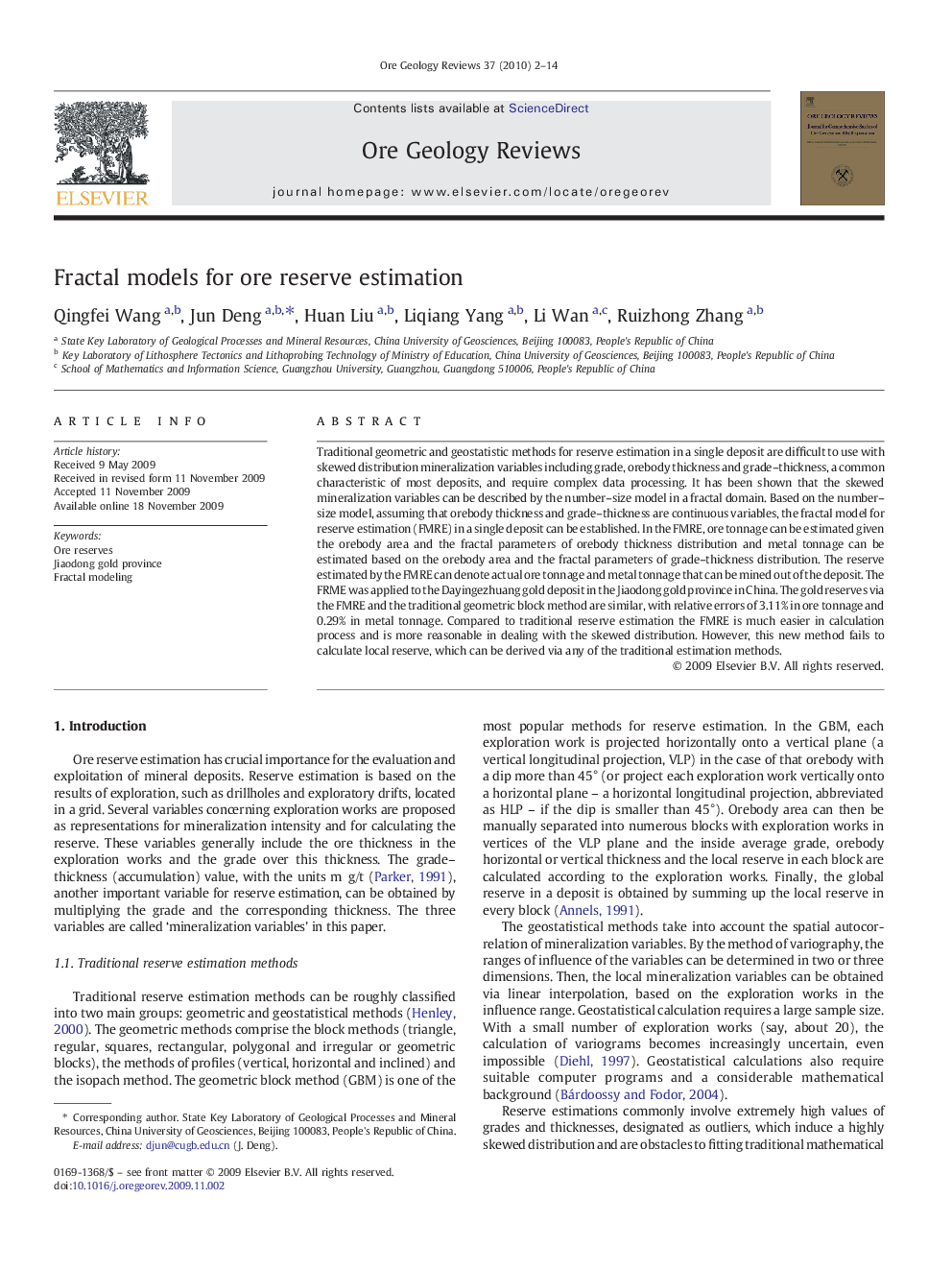| Article ID | Journal | Published Year | Pages | File Type |
|---|---|---|---|---|
| 4697794 | Ore Geology Reviews | 2010 | 13 Pages |
Traditional geometric and geostatistic methods for reserve estimation in a single deposit are difficult to use with skewed distribution mineralization variables including grade, orebody thickness and grade–thickness, a common characteristic of most deposits, and require complex data processing. It has been shown that the skewed mineralization variables can be described by the number–size model in a fractal domain. Based on the number–size model, assuming that orebody thickness and grade–thickness are continuous variables, the fractal model for reserve estimation (FMRE) in a single deposit can be established. In the FMRE, ore tonnage can be estimated given the orebody area and the fractal parameters of orebody thickness distribution and metal tonnage can be estimated based on the orebody area and the fractal parameters of grade–thickness distribution. The reserve estimated by the FMRE can denote actual ore tonnage and metal tonnage that can be mined out of the deposit. The FRME was applied to the Dayingezhuang gold deposit in the Jiaodong gold province in China. The gold reserves via the FMRE and the traditional geometric block method are similar, with relative errors of 3.11% in ore tonnage and 0.29% in metal tonnage. Compared to traditional reserve estimation the FMRE is much easier in calculation process and is more reasonable in dealing with the skewed distribution. However, this new method fails to calculate local reserve, which can be derived via any of the traditional estimation methods.
